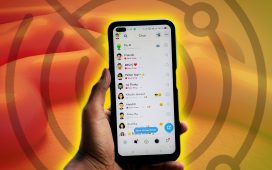The iPhone’s space constraints will always present a challenge for Apple when introducing new features to excite the masses, but that did not stop the technology giant from introduced Emergency SOS via satellite, which debuted in the iPhone 14 exactly two years ago today. Requiring an open sky to function properly, this addition launched in the U.S. and Canada first, with the company reminding users that the feature would be free for the first two years, after which a subscription would be required. Fortunately, millions of iPhone owners have yet to fork over any fee because Emergency SOS via satellite can still be accessed without paying a single dime.
Android competitors, including Qualcomm, have attempted to compete with Apple’s Emergency SOS via satellite but have achieved little progress in this regard
How Emergency SOS via satellite materialized is not a mystery because Apple partnered with Globalstar, an American satellite communications firm, to help bring the feature to iPhone 14 and newer models. Just recently, the Cupertino behemoth was reported to have renewed its partnership with Globalstar and committed to pay $1.1 billion to expand the available capacity to accommodate additional iPhones. Apparently, SpaceX is also said to be tied with Apple and will deploy satellites worth $1.5 billion to keep pace with growing iPhone use.
As for how helpful Emergency SOS via satellite is, we have reported several incidents where iPhone owners faced overwhelming odds, such as when a man’s car fell 400 feet in the Crescenta Valley. If it were not for Apple’s Emergency SOS via satellite or Crash Detection, the rescue group would have never triangulated the man’s exact location, and it is likely that he would have met an untimely demise. Similarly, the feature helped tourists call for help when they were lost in the mountains of Mugello, and there was no cellular reception available at the time.
Given how much a life-saver Emergency SOS via satellite, it is surprising how Apple’s competition has yet to introduce a worthy alternative. In 2023, Qualcomm officially announced Snapdragon Satellite, which would bring ‘pole to pole’ emergency messaging to devices featuring the Snapdragon 8 Gen 2. Like Apple, Qualcomm helped introduce Snapdragon Satellite by partnering with Iridium, but it appears that the business relationship soured because there were no follow-ups.
This setback did not deter Qualcomm. After all, it is thanks to the iPhone 14’s Snapdragon X65 5G modem that made satellite communication possible, so Qualcomm decided to bake this feature directly to the Snapdragon 8 Elite, its current flagship chipset. However, it is up to phone makers to determine whether this addition makes the cut. There is no telling if Apple ever intends to charge customers an annual sum to continue using Emergency SOS via satellite, but it might not be a positive look for a company if it tries to cash in on the chance that an iPhone owner faces a life-threatening situation. We assume that Apple will keep the feature free and attempt to offset its investment by charging a premium elsewhere.







